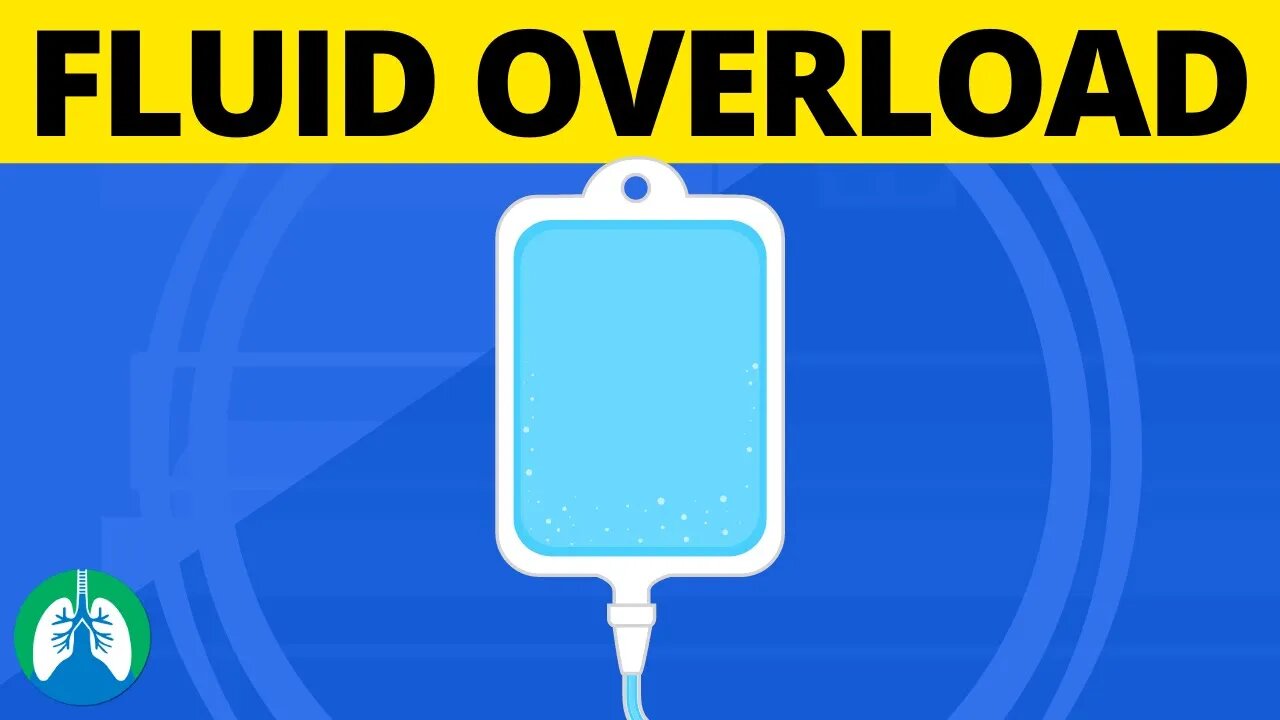Premium Only Content

Treating a Patient with Fluid Overload (Hypervolemia) | TMC Practice Question
Do you know how to treat a patient with hypervolemia? What are the signs of fluid overload? Watch this video for a sample TMC Practice Question.
🟦 TMC Test Bank (All Practice Questions) 👉 http://bit.ly/2IGeqSu
🟦 Daily TMC Practice Questions (via Email) 👉 http://bit.ly/2NnXh3C
➡️ An adult patient with fluid overload was given a dose of furosemide intravenously. After the drug was given, the patient displayed an arrhythmia on the EKG that was not present before. Which of the following would you recommend in this situation?
A. Defibrillate the patient
B. Administer another dose of furosemide
C. Administer a dose of epinephrine
D. Check the patient’s potassium level
➡️ Do you know the answer?
First and foremost, you needed to know that furosemide is another name for Lasix — which, of course, is a diuretic agent that is given to patients with fluid overload. In general, you need to know that when Lasix (or any diuretic agent) is given, it's normal for the patient to excrete a large amount of potassium.
➡️ What does the patient's Potassium Level tell us?
Potassium levels are associated with the heart, so this explains why the patient has a new arrhythmia. There is no indication to give more Lasix, nor is there an indication to give epinephrine. Also, there is no indication for defibrillation either.
—————
📗 BEST STUDY GUIDES FOR YOU
▪ TMC Test Bank 👉 http://bit.ly/2IGeqSu
▪ Hacking the TMC Exam 👉 http://bit.ly/2XBc8do
▪ TMC Exam Bundle (Save $) 👉 https://bit.ly/34pqEsV
▪ Daily TMC Practice Questions 👉 http://bit.ly/2NnXh3C
💙MORE FROM RTZ
▪ Free TMC Practice Exam 👉 http://bit.ly/2XlwASL
▪ Free RRT Cheat Sheet 👉 http://bit.ly/2IbmOKB
▪ Resources for RT's 👉 http://bit.ly/2WVV5qo
▪ Testimonials 👉 http://bit.ly/2x7b5Gl
🌐FOLLOW US
▪ Instagram 👉 http://bit.ly/2FhF0jV
▪ Twitter 👉 http://bit.ly/2ZsS6T1
▪ Facebook 👉 http://bit.ly/2MSEejt
▪ Pinterest 👉 http://bit.ly/2ZwVLPw
🚑MEDICAL DISCLAIMER
Medicine and Respiratory Therapy are continuously changing practices. The information in this video is for educational and entertainment purposes only. For medical advice, please consult with a physician or qualified medical professional.
💡AFFILIATE DISCLAIMER
This description contains affiliate links. If you decide to purchase a product through one of them, we receive a small commission at no cost to you.
—————
⏰TIMESTAMPS
0:00 - Intro
0:23 - Practice Question
0:57 - Explanation
1:44 - Correct Answer
—————
🖼CREDIT FOR MUSIC AND GRAPHICS:
▪ Music provided by https://audiojungle.net/
▪ Graphics: www.canva.com
▪ Graphics: www.freevector.com
▪ Graphics: www.vecteezy.com
▪ Graphics: www.pngtree.com
#TMCExam #TMCPracticeQuestion #FluidOverload
-
 3:33
3:33
Respiratory Therapy Zone
1 year agoSternum (Medical Definition) | Quick Explainer Video
295 -
 4:11:49
4:11:49
Nerdrotic
15 hours ago $36.69 earnedThe Best and Worst of 2024! Sony Blames Fans | Batman DELAYED | Nosferatu! |Friday Night Tights 334
179K32 -
 7:55:51
7:55:51
Dr Disrespect
19 hours ago🔴LIVE - DR DISRESPECT - WARZONE - SHOTTY BOYS ATTACK
229K32 -
 1:30:23
1:30:23
Twins Pod
18 hours agoHe Went From MARCHING With BLM To Shaking Hands With TRUMP! | Twins Pod - Episode 45 - Amir Odom
141K31 -
 1:02:30
1:02:30
Exploring With Nug
19 hours ago $4.20 earned2 Duck Hunters Missing After Kayak Capsizes!
66.2K4 -
 46:48
46:48
Mally_Mouse
13 hours agoLet's Hang!! -- Opening Christmas gifts from YOU!
74.4K1 -
 44:55
44:55
Athlete & Artist Show
20 days ago $2.07 earnedNHL 4 Nations Snubs, Was Hawk Tuah Coin A Scam?
71.1K -
 33:47
33:47
Stephen Gardner
18 hours ago🔥Pentagon Whistleblower UNLEASHES on Biden and Obama!
127K284 -
 2:20:30
2:20:30
The Dilley Show
20 hours ago $28.77 earnedRoger Stone in Studio plus Q&A Friday! w/Author Brenden Dilley 12/27/2024
103K22 -
 1:57:02
1:57:02
The Charlie Kirk Show
18 hours agoThe Great H-1B Battle + AMA | Lomez | 12.27.24
190K297